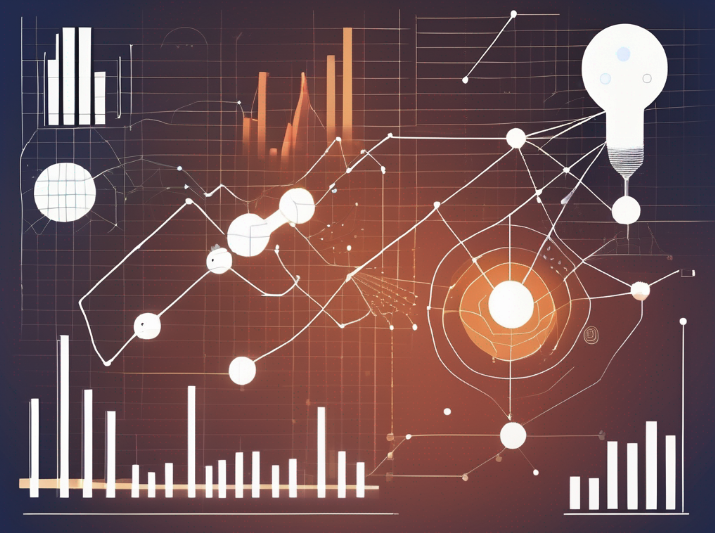Computer Science is a rapidly evolving field that offers a wide range of opportunities.
Whether you’re interested in software development, data analysis, artificial intelligence, or cybersecurity, a solid foundation in computer science is crucial.
However, the vastness of this field can be overwhelming for beginners.
This article aims to provide a comprehensive self-study map for computer science, guiding you through the essential topics and resources you need to master.
Self-Study Map for Computer Science
- Introduction to Computing: Learn about the basics of computers, including hardware, software, and operating systems.
- Programming Fundamentals: Gain proficiency in at least one programming language, such as Python, Java, or C++.
- Data Structures: Understand and implement basic data structures like arrays, linked lists, stacks, and queues.
- Algorithms: Learn algorithm design and analysis, and study common algorithms for sorting and searching.
- Databases: Gain knowledge on relational databases, SQL, and possibly NoSQL databases.
- Web Development: Learn front-end technologies (HTML, CSS, JavaScript) and a back-end framework.
- Operating Systems: Understand how operating systems work, including process management and memory management.
- Computer Networks: Study the fundamentals of computer networking, including protocols and network architectures.
- Software Engineering: Learn software development methodologies and version control systems.
- Object-Oriented Programming: Deepen understanding of OOP principles like encapsulation, inheritance, and polymorphism.
- Discrete Mathematics: Understand the mathematical foundations of computer science, including logic, set theory, and graph theory.
- Artificial Intelligence and Machine Learning: Get a basic understanding of AI and ML concepts and algorithms.
- Cybersecurity: Learn about securing computers and networks, encryption, and ethical hacking.
- Computer Architecture: Study how computers process information and execute instructions at the hardware level.
- Operating System and Hardware Interaction: Understand how operating systems interact with computer hardware.
- Mobile App Development: Learn to develop applications for Android or iOS if interested in mobile computing.
- Cloud Computing: Gain knowledge on cloud services and how to utilize them for various applications.
- Big Data and Analytics: Understand the basics of big data technologies and data analytics.
- Open Source Contributions: Contribute to open source projects to gain real-world experience.
- Projects and Portfolio: Work on personal or collaborative projects to apply knowledge and build a portfolio.
- Networking and Community: Engage with the computer science community through forums, social media, and local meetups.
- Continuous Learning: Stay updated with the latest technologies and advancements in computer science.
Table of Contents
Understanding Computer Science
Before diving into the self-study map, it’s important to understand what computer science is.
It’s a discipline that involves the understanding and design of computers and computational processes.
It’s not just about coding; it’s about understanding how technology works and how to solve problems using technology.
Starting Point: Basics of Programming
The first step in your self-study journey should be learning the basics of programming.
Programming is the process of creating a set of instructions that tell a computer how to perform a task. It’s the foundation of all computer science.
Choosing a Programming Language
There are many programming languages out there, each with its own strengths and weaknesses.
For beginners, Python is often recommended due to its simplicity and readability. Other popular languages include Java, C++, and JavaScript.
Learning Resources
There are numerous online resources available for learning programming.
Websites like Codecademy, Coursera, and Khan Academy offer interactive courses that can help you get started.
Books like “Learn Python the Hard Way” by Zed Shaw are also great resources.
Next Step: Data Structures and Algorithms
Once you have a grasp on programming, the next step is to learn about data structures and algorithms.
These are fundamental concepts in computer science that deal with organizing and manipulating data efficiently.
Data Structures
Data structures are ways of organizing and storing data so that they can be accessed and worked with efficiently.
They are fundamental to programming and are used in almost every piece of software or application.
Algorithms
An algorithm is a set of instructions for solving a problem or accomplishing a task.
Every piece of software you use, from your web browser to your favorite video game, relies on algorithms to function.
Learning Resources
There are many resources available for learning data structures and algorithms.
Websites like GeeksforGeeks, Coursera, and Khan Academy offer comprehensive courses on these topics.
Books like “Introduction to Algorithms” by Thomas H. Cormen are also excellent resources.
Advanced Topics: Operating Systems, Networks, and Databases
After mastering data structures and algorithms, you can move on to more advanced topics like operating systems, networks, and databases.
These topics give you a deeper understanding of how computers and systems work.
Operating Systems
An operating system is the software that manages a computer’s resources and provides a user interface.
Understanding how operating systems work can help you write more efficient code and troubleshoot problems more effectively.
Networks
Networking involves the design and implementation of systems for computers to communicate with each other.
It’s a crucial part of modern computing, as most applications now involve some form of networking.
Databases
Databases are used to store, retrieve, and manipulate data. They are a crucial part of many applications, from websites to mobile apps.
Learning Resources
There are many resources available for learning these advanced topics. Websites like Coursera, edX, and Udacity offer comprehensive courses on these topics.
Books like “Operating System Concepts” by Abraham Silberschatz and “Computer Networking: A Top-Down Approach” by James F. Kurose are also excellent resources.
FAQs on Self-Study Map for Computer Science
1. Can I learn computer science on my own?
Yes, with the right resources and dedication, you can learn computer science on your own. This article provides a comprehensive self-study map to guide you.
2. Which programming language should I start with?
Python is often recommended for beginners due to its simplicity and readability.
However, the choice of programming language depends on your goals and interests.
3. What are data structures and algorithms?
Data structures are ways of organizing and storing data, while algorithms are sets of instructions for solving problems. They are fundamental concepts in computer science.
4. Why do I need to learn about operating systems, networks, and databases?
These advanced topics give you a deeper understanding of how computers and systems work, which can help you write more efficient code and troubleshoot problems more effectively.
5. What resources are available for learning computer science?
There are numerous online resources like Codecademy, Coursera, and Khan Academy, as well as books like “Introduction to Algorithms” and “Operating System Concepts”.
6. How long does it take to learn computer science?
The time it takes to learn computer science depends on your dedication and how much time you can devote to studying.
With consistent study, you can gain a solid foundation in a few months.
7. Can I get a job in computer science if I’m self-taught?
Yes, many companies value skills and experience over formal education. Building a portfolio of projects can demonstrate your skills to potential employers.
8. What are some good projects for beginners?
Simple projects like a calculator app, a to-do list app, or a personal website are great for beginners.
They allow you to apply what you’ve learned and gain practical experience.
9. How do I stay motivated while self-studying?
Setting clear goals, maintaining a regular study schedule, and taking breaks when needed can help keep you motivated.
Joining online communities can also provide support and encouragement.
10. What’s the next step after learning the basics?
After learning the basics of programming, the next step is to learn about data structures and algorithms.
After that, you can move on to more advanced topics like operating systems, networks, and databases.
Summary – Self-Study Map for Computer Science
The self-study map for computer science starts with learning the basics of programming, followed by data structures and algorithms.
After mastering these fundamentals, you can move on to more advanced topics like operating systems, networks, and databases.
There are numerous online resources and books available to help you along your journey.
The key to successful self-study is consistency and practice.
Related


